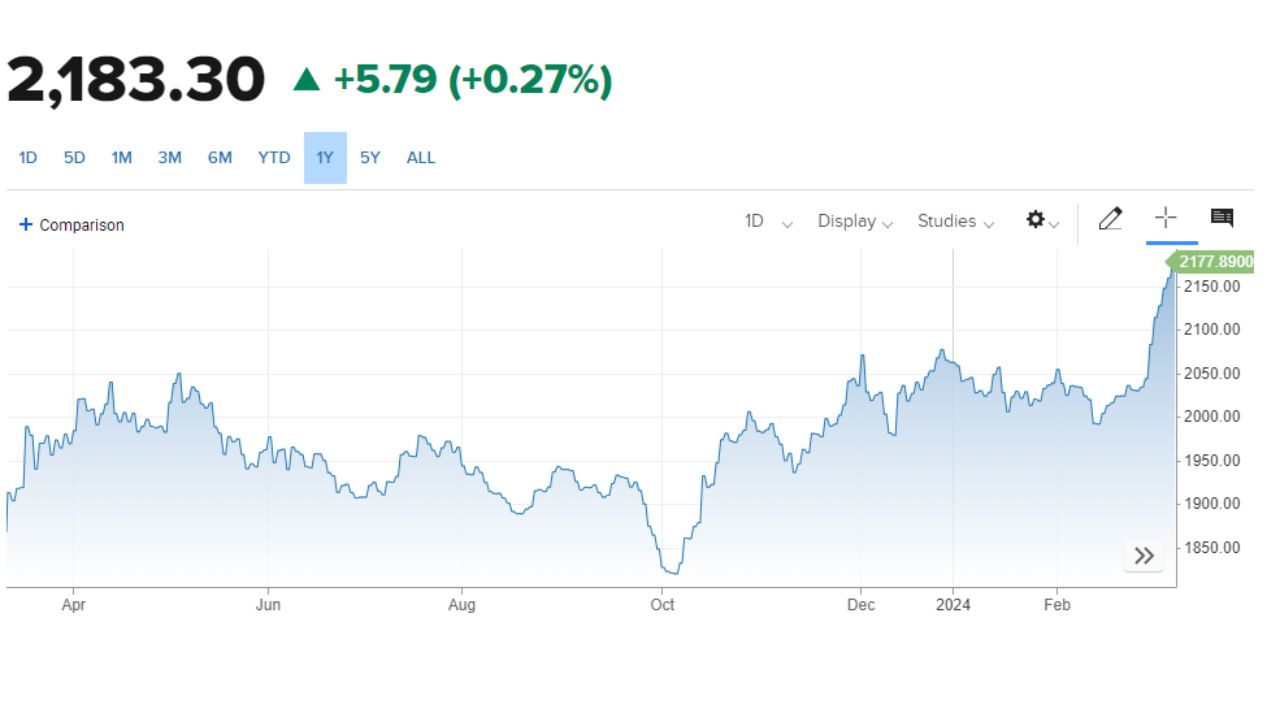Spot gold took a momentary pause from its record-breaking rally on Monday, holding steady at $2,177.71 per ounce, while *U.S. gold futures* saw a slight uptick of 0.03%, reaching $2,185.10.
This respite follows a remarkable surge in gold prices driven by a cooling U.S. labour market and statements from the Federal Reserve. Traders are now eagerly anticipating the upcoming U.S. inflation report, seeking fresh insights into the potential timing of interest rate cuts.
Gold reached an all-time high of $2,194.99 on Friday, March 8th, marking the fourth consecutive day of record peaks, spurred by indications of a slowdown in the U.S. labour market.
Analysts note a surge in demand for gold, emphasizing that the market is currently unfavourable for short positions, especially as traders anticipate Federal Reserve cuts.

According to City Index senior analyst Matt Simpson, “With large speculators having increased net-long exposure at their fastest weekly pace in 3.5 years last Tuesday, gold is clearly in demand and not a market to short for any length of time whilst traders expect Fed cuts.”
The Role of CPI Data in Gold’s Trajectory
In the week ending March 5, COMEX gold speculators boosted their net long positions significantly, adding 63,018 contracts to reach a total of 131,060, as revealed by Friday’s data.
The trajectory of gold prices, however, appears poised to consolidate at elevated levels pending the release of Consumer Price Inflation (CPI) data for February, scheduled for Tuesday.
Analysts believe this report is a pivotal factor influencing gold prices this week, especially since the Federal Reserve is currently in a blackout period.
Simpson asserts, “Prices will simply consolidate at lofty levels heading into consumer price inflation, or CPI, data for February, due on Tuesday, as that is likely the single biggest driver of gold prices this week, given that the Fed are now in a blackout period.”
Federal Reserve’s Stance and Rate Cut Confidence
The potential for an early rate cut gains traction if the CPI print indicates a cooler reading, providing support for gold prices.

Federal Reserve Chair Powell conveyed increased confidence in the possibility of rate cuts in the coming months during his Congressional testimony last week.
Presently, traders are factoring in three to four quarter-point (25 bps) U.S. rate cuts, with a 75% likelihood of the first cut occurring in June, according to LSEG’s interest rate probability app.
The allure of non-yielding bullion is further enhanced by lower interest rates, explaining the continued appeal of gold amidst the current economic landscape.
